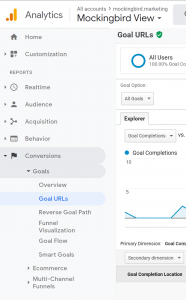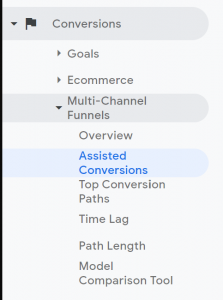Finding the Secret Pages that Drive Conversions
A lot of value is given to landing pages and top converting pages, and a lot of value should be given to them. They’re what hook consumers in and eventually turn them into clients.
But that isn’t always the whole story. Users tend to spend some time on the website before picking up the phone or filling out a form, so how can you know the full story? Which pages are consistently convincing clients halfway through their journey?
Luckily, Google Analytics can help show you exact user paths and accurate conversion assists.
What Won’t Help
Goal URLs

The Goal URLs tab in GA seems useful until you open it up and see that most of your conversions occurred on your “Thank You” page. Unless Ernest Hemmingway is writing your thank you page, it is unlikely that this is the place where consumers were truly convinced to become a client.

Assisted Conversions

Assisted conversions are a step above goal URLs, but still fail to tell the whole story. I set up my assisted conversion page to show landing pages, but the default for GA is to show sources. This is great for knowing if your site is driving conversions through SEO and content or through ads (it should be some combination of both), but it isn’t great for knowing user paths once they’re on your site.

What Will Help
Reverse Goal Path

Your reverse goal path tab is your friend. It will show you the three pages the user visited prior to converting, giving you some idea of what pages visitors find intriguing without yet fully convincing them to convert. They gain trust, build interest, and lead the user towards the last-click pages. Remember how a good chunk of our Goal URLs were thank you pages? Check out how many of our goal completion locations are thank you pages, and how many different paths the users took to get there.

Another benefit of looking at reverse goal paths is that you can see how well specific pages are doing. The page might not show that it assisted in any conversions, except it might show up in goal paths. If you’re curious, you can search for the page name and see how many conversions it actually assisted in:

Why You Should Know This
Knowing the path your users take is vital for designing your website. Think of the natural flow provided by internal linking, design, and access to contact info and forms when building your website and adding content. Your users’ goal paths, especially the successful ones, will tell you where to invest your time and energy.
If you feel as though you aren’t getting enough information from your Google Analytics setup or that your website could be improved, contact Mockingbird.
